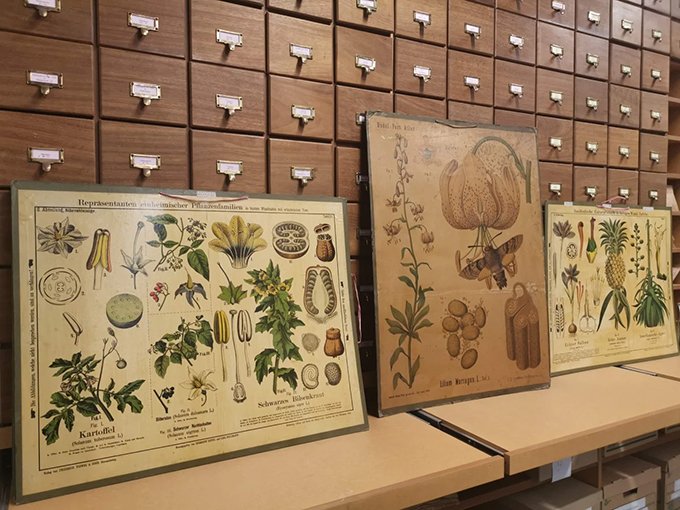
A seed collection? A collection of fossils? It may sound old-fashioned in a world of virtual reality and artificial intelligence. But these types of systematized repositories of biological material store valuable scientific information collected over time and geographical space.
Biological collections can be considered as micromuseums that house scientific information of great importance for research, education and the dissemination of knowledge. From the point of view of research, these collections have value and usefulness in diverse topics, such as studies on the history of science, the conservation of ecosystems, studies on genetic and species biodiversity, the identification and classification of new specimens or studies related to the effects of climate change.
Furthermore, from the educational field, biological collections have enormous pedagogical and didactic potential. They are a support that makes it easier to connect the acquired knowledge with the construction of new knowledge.
Know to preserve
To conserve you have to know. It is recommended that scientific collections be periodically reviewed, properly preserved, restored and expanded. A preventive conservation strategy for collections is essential, along with the development of a protocol for handling and managing its specimens.
Along with the conservators, there is an organization that is responsible for supervising and disseminating these collections: the Institute of Heritage Sciences , founded in 2010, is a Spanish research center dependent on the Higher Council for Scientific Research (CSIC) that is dedicated to the study of cultural and scientific heritage, covering its origin, its development, its management, conservation and protection problems, its uses and its functions and potential for economic, social and cultural development.
The JAEN Herbarium: historical and scientific heritage
There are more and more projects to digitize scientific heritage, which contributes to the globalization of knowledge. The digitization of biological collections, the creation of virtual photographic galleries and the computerization and open publication of data makes access to information from scientific collections much easier for the purposes of research, education, dissemination and even leisure.
An example of this is the JAEN Herbarium . This herbarium, located at the University of Jaén, was founded in 1973 and houses an important collection of vascular flora.
Although it is not currently fully catalogued, it is estimated that it contains between 35,000 and 40,000 records, the majority coming from the province of Jaén. It also includes sheets from European countries such as Italy and Germany and African countries such as Tunisia and Morocco.
It also has historical value, since its collection includes specimens from the 19th century collected by illustrious botanists such as Font i Quer and Cuatrecasas.
The JAEN Herbarium is disseminating its content to the scientific and educational community through the recent creation of a blog that allows quick and free access to information of interest such as the herbarium sheets guarded, cataloged and now partly digitized and available online .
Herbaria as a teaching resource
The digitization of collections is revolutionizing their use in the educational field. Many centers have collections, although it is common that teachers, due to lack of knowledge, lack of time or scarcity of resources, do not use them in their teaching practice.
There are numerous occasions in which teachers look for teaching resources that are rigorous from a scientific point of view, but also attractive and easily accessible to students. To this end, it is advisable to encourage teachers to rescue forgotten collections or acquire and even create their own biological collections, collecting and classifying leaves, fruits and seeds.
This will allow students to develop skills and abilities typical of scientific work and will promote the connection of emotions and experiences in lasting learning. Here, herbaria that have their sheets digitized and made available on free access websites play a key role.
The JAEN Herbarium collection can be consulted at any time and from any place, being a useful didactic resource in the teaching of science that allows generating experiential learning and promoting learning by competencies.
Scientific heritage, and in particular biological collections such as herbaria, can be used for different academic purposes, highlighting the following uses:
- Support material in master classes or practices.
- Research activities.
- Knowledge consolidation and evaluation activities.
- Reinforcement activities or review of concepts.
The options are multiple, so dust off your collections and use them in the classroom!
Author Bio: Fatima Aguilera Padilla is a Biologist. Professor in the Didactics Area of Experimental Sciences at the University of Jaén